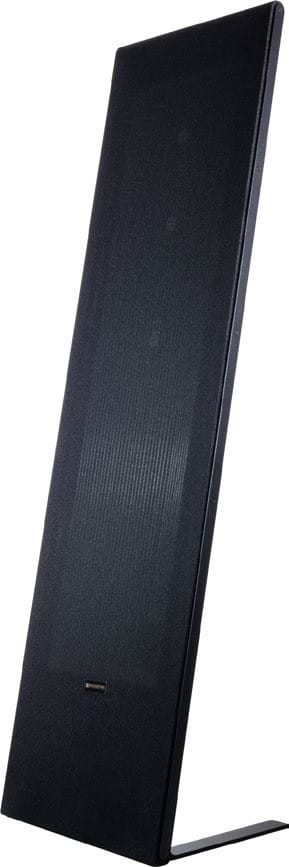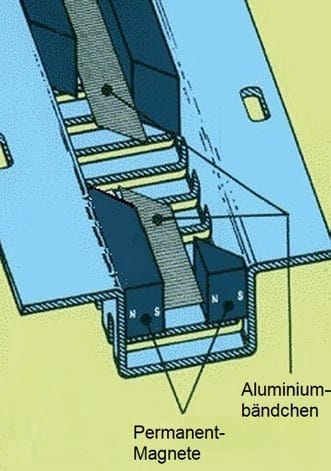Magnepan mg-0.7 Review
We had Magnepan’s MG-3.7i in for review. Saying goodbye to it was hard, so we’re thrilled to now welcome its little sister, the MG-0.7!

Recently, we had an exceptional listening experience with Magnepan. We tested a large planar speaker for the first time: the Magnepan 3.7i. Its open, room-filling sound remained rich and high-resolution even at high volumes, effectively scaling the benefits we associate with magnetostatic headphones to an entire room.
Pioneering Spirit
In the USA, where Jim Winey invented the Magneplanar speaker in 1969 as an alternative to electrostats, Magnepan has been a well-known and beloved brand. During his engineering career at a large Minnesota company specializing in films and coating technologies, Winey’s interest in developing a planar speaker was sparked.
After creating prototypes and securing patents, he took a $50,000 loan to establish his own company and pursue the quest for perfect sound. Although the ideal sound may be a myth, Winey quickly attracted attention, and Magnepan speakers soon became a hit among American HiFi enthusiasts. Today, Magnepan speakers are sold worldwide. Sadly, Jim Winey passed away earlier this year at 89. The company remains in Minnesota, now led by his sons, Mark and Steven.
In Germany, Magnepan remains something of a secret, though this may soon change with an elite distributor. Jürgen Reichmann now handles distribution of Magnepan’s planar speakers in Germany.

Reichmann will also be present at the Central German HiFi Days, where you can experience the “Maggies” for yourself in the “Halle” room on the third floor of the Old Printing House.
Magnets vs. Electrostatics
If you remember our review of Magnepan’s 3.7i, you can skip the following section. Since we’re only testing a speaker of this type for the second time, we’re repeating a brief overview. Magnepan’s planar speakers are unique in their function, which we’ll briefly explain.

Unlike traditional ribbon speakers used only for certain frequencies, Magnepan applies this principle to the entire frequency range. Their speakers function as full-range magnetostats. Instead of high-voltage oscillation, magnets behind the membrane create magnetic fields that act on thin conductors on an ultra-thin Mylar film, five times thinner than a human hair. The magnetostatic design has key advantages over electrostats: while electrostats require a high voltage and a power supply, which binds them to the electrical grid, they also tend to attract dust over time, which can degrade sound quality. In some cases, electrostats can even spark under heavy load, damaging the delicate membrane.
Additionally, electrostats must often be quite large to reproduce low frequencies, so many manufacturers opt for hybrids, using traditional cone speakers for bass. However, this can lead to sonic compromises, as dynamic drivers cannot match the responsiveness of foil drivers. Magnetostats also offer a stable impedance across frequencies, whereas electrostats often have a low resistance at low frequencies, which can strain amplifiers. These technical benefits make Magnepan’s magnetostat design a robust and sonically compelling alternative, as evidenced by the Magnepan 3.7i’s 9.8 out of 10 in our tests (reference class).
Magnepan MG-0.7
All “Maggies” are strikingly designed. While we found the 3.7i slightly oversized in our lab, the MG-0.7 is more restrained. At just 32 millimeters deep, it’s equally slim as its larger sibling but stands at only 140 cm tall and less than 40 cm wide, fitting easily into smaller spaces. The “Maggie” MG-0.7 is a two-way system. Behind the protective fabric cover, you’ll find the narrow tweeter with denser conductors next to the mid-bass driver. This setup enables a frequency range of 45 Hz to 22 kHz, with a nominal impedance of 4 ohms and an efficiency rating of 86 decibels.
Despite these values, the MG-0.7 is picky about amplifiers. Placing the MG-0.7 is crucial, as the planar speakers act as dipoles, radiating sound almost as much to the rear as to the front. Maintaining a distance of at least one meter from the back wall helps avoid sound distortions due to wave overlaps or phase issues. Side walls are less relevant due to the minimal sideward sound dispersion of Magnepan speakers. The stereo setup also significantly influences the sound. Magnepan recommends positioning with the tweeters facing outward for an airy, spacious performance, but some may prefer the opposite for a more compact sound. Based on our experience with the larger 3.7i, we chose the outward-facing tweeter setup, which left a strong impression from our previous encounter with Magnepan.
Little Masterpiece
Testing the MG-0.7, we initially tried two Rotel amps, but they didn’t bring out the full potential of our review units. Our reference amp, Musical Fidelity’s M8xi, with up to 870 W per channel at 4 ohms, ultimately delivered satisfying results. This powerful amp, also from Jürgen Reichmann’s portfolio, confirmed that the MG-0.7’s efficiency might be its only weakness. We had to turn up the amp considerably to make the “Maggie” shine. No need to worry about overloading the speaker, though, as it’s protected by a fuse. The effort is worth it, as Magnepan’s sound is something special. Take, for example, Jeff Buckley’s live version of “Calling You” from 2016 – pure magic.
This is music at its finest. The guitar sound is big, beautifully textured, and almost three-dimensional, evoking the feel of two Fender Twin Reverbs working together. The Magnepan planar speakers vividly illustrate the physical phenomenon described by Ernst Petzold as “surface loudness.” This term suggests that larger sound-emitting surfaces, due to lower sound intensity, produce a fuller timbre. Demonstrated perfectly by Buckley’s music, the guitar and vocals are rich in color and tone, filling the space so naturally that it’s hard to imagine a live performance could surpass it. The MG-0.7 doesn’t feel any less defined or powerful than its larger sibling!

Spatial Marvel
Consider Labrinth and Zendaya’s “I’m Tired.” Here, Magnepan and Musical Fidelity pair brilliantly. While the Rotel amps rendered the reverb on the vocals somewhat flat and artificial, the M8xi’s three-dimensional soundstage was remarkable. With the stereo pair, we achieved outstanding depth layering, a quality inherent to planar speakers, as there are no housing resonances or bass reflex flows to color the sound. Dipole speakers, like the Magnepan, also interact less with room modes, which is noticeable with bass-heavy tracks like “Have a Cigar” by Pink Floyd.
Despite being from the seventies, this song with its prominent bass, Rhodes, and guitar can challenge many systems due to frequency overlaps in the low mids, which often cause room issues. However, Magnepan’s planar speaker handles it directly and precisely, as if remastering the track in real-time. If you attend the Central German HiFi Days in Leipzig, take the time to visit the “Halle” room for an extended listen to this HiFi gem, hosted by Markus Brogle and Jürgen Reichmann.
Specs
General
- Device Class: Floor-standing speaker
- Price Category: Mid-range
- Manufacturer: Magnepan
- Model: MG-0.7
- Price (RRP): $2990 (per pair)
- Dimensions (W/H/D): 38.7 × 137.8 × 3.2 cm
- Weight: 12 kg
Technical Data (according to manufacturer)
- Design: 2-Way, Magnetostat
- Impedance: 4 ohms
- Efficiency: 86 dB (8.6/10)
- Frequency Range (Manufacturer’s Spec): 45 Hz – 22 kHz
- Power Handling (Manufacturer’s Spec): Not available
- Room Recommendation: 12 m² – 35 m²
- Individual Sound Adjustment: 2-Band EQ
- Inputs: Single-Wiring
Conclusion
For us, once you’re into planar speakers, there’s no turning back. The Magnepan MG-0.7 underscores this sentiment. Its powerful, well-defined sound is hard to match with conventional cone speakers in this price range. At less than $3000, it offers the genuine Magnepan sound – a true HiFi delight!
Special Features
- Planar Speaker
Advantages
- Tangible spatiality
- Realistic resolution
- Precise tuning
Disadvantages
- Requires substantial power
Rating
- Bass Response: 9.5/10
- Midrange Response: 10/10
- Treble Response: 10/10
- Spatiality: 10/10
- Sound Quality: 9.9/10
- Features/Build Quality: 9/10
- User-Friendliness: 8/10
- Adjustments: None
- Intermediate Score: 86 out of 90 points
- Price/Performance: Excellent (10/10)
Result
- Reference Class: 9.6/10
Magnepan .7 are you friggin kidding me ?
Utterly gobsmacked by the new .7 it is for sure my favorite stock form Maggie. Here we are off the cuff, not even properly set up ...






